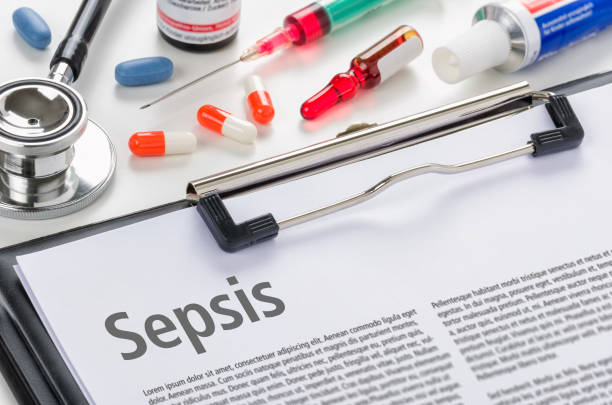Cheyenne Neurologist’s Studies Linking Algal Blooms to Neurological Disease Receives New Support
January 20, 2016
Environmental Toxin May Increase Risk of Alzheimer’s Disease and ALS
Cheyenne, WY – As a neurologist at the Cheyenne Regional Medical Center, Dr. Tracie Caller sees patients with a variety of neurological illnesses. But ALS patients hold a special place in her heart. When she was a resident at Dartmouth-Hitchcock Medical School, she and her collaborators at Dartmouth, the University of New Hampshire and the University of Vermont, performed groundbreaking studies, suggesting that environmental toxins in polluted lakes and rivers increased the risk of ALS. Today there is more evidence to back that theory.
A new study published today by the Royal Society of London in the biological research journal Proceedings of the Royal Society B indicates that chronic exposure to an environmental toxin called BMAA may increase risk of neurodegenerative illness. Conducted by scientists at the Institute for EthnoMedicine, a non-profit medical research organization in Jackson Hole, and the University of Miami Brain Endowment Bank, the reports indicates that exposure to BMAA, can trigger ALS and other neurodegenerative illnesses in vulnerable individuals.
Brain tangles and amyloid deposits are the hallmarks of both Alzheimer’s disease and an unusual illness suffered by Chamorro villagers on the Pacific Island of Guam, whose diet is contaminated by the environmental toxin BMAA. Pacific Islanders with this unusual condition also suffer from dementia and symptoms similar to Alzheimer’s disease, ALS and Parkinson’s disease.
The cause of neurodegenerative disease remains largely unknown, and the role of environmental factors in these illnesses is poorly understood. However, scientists have suspected a link between the neurotoxin, BMAA, found in some harmful algal blooms, and also in the brains of people suffering from ALS and Alzheimer’s disease.
At Dartmouth, Dr. Tracie Caller and her professor Dr. Elijah Stommel began using Google maps to plot the residences of their ALS patients. They soon noticed that ALS patients were more prevalent in areas bordering lakes and rivers contaminated with cyanobacteria than would be expected by chance. Expanding their survey to all of New Hampshire, Maine, and Vermont, they found the pattern was consistent.
“Using GIS mapping software, we found that a 25-fold increase in the risk of ALS occurs for people who live next to water contaminated by cyanobacteria,” Dr. Caller said. Once known as blue-green algae, cyanobacteria produce blooms – large floating masses- in warm, low water reservoirs- and in the world’s oceans. Cyanobacteria can contain the toxin BMAA.
A possible mechanism to account for the Dartmouth team’s findings were published today by the Royal Society of London. “Our findings show that chronic exposure to BMAA can trigger Alzheimer’s-like brain tangles and amyloid deposits,” said Paul Alan Cox, Ph.D., an ethnobotanist at the Institute for EthnoMedicine and lead author of the study. “As far as we are aware, this is the first time researchers have been able to successfully replicate brain tangles and amyloid deposits in an animal model through exposure to an environmental toxin.”
In the research announced today, scientists conducted two separate experiments lasting 140 days on vervets. In the first experiment, vervets fed fruit dosed with BMAA developed neurofibrillary tangles and amyloid deposits similar to Pacific Islanders who died from the disease. Vervets fed equal amounts of L-BMAA and the dietary amino acid L-serine had a reduced density of tangles. Vervets fed a placebo dose did not develop neuropathology.
A replication experiment was conducted which added a BMAA dose closer to the amount Chamorro villagers would be exposed to over a lifetime. The first group received fruit containing L-BMAA, the second group received fruit containing one-tenth of the regular dose of L-BMAA, the third group received fruit containing equal amounts of L-BMAA and L-serine, and the fourth group received fruit containing a placebo.
After 140 days, tangles and amyloid deposits were found in the brain tissues of all of the vervets who consumed BMAA. “This is the missing link,” said Dr. Caller, “ingestion can cause neurotoxicity.”
“This study takes a leap forward in showing causality—that BMAA causes disease,” said Deborah Mash, Ph.D., director of the University of Miami Brain Endowment Bank and co-author of the study. “The tangles and amyloid deposits produced were nearly identical to those found in the brain tissue of the Pacific Islanders who died from the Alzheimer’s-like disease.”
“I am pleased with my clinical practice to continue studies on the epidemiology of ALS, as well as more basic research, in collaboration with the Jackson Hole team,” Dr. Caller added. “My fondest hope would be for this new research direction to lead to novel therapies for ALS, Alzheimer’s and other neurodegenerative diseases.”
Dr. Tracie Caller is a neurologist at the Cheyenne Regional Medical Center and an adjunct professor at the Geisel School of Medicine at Dartmouth. Dr. Caller is also part of the Institute for EthnoMedicine’s consortium of 50 scientists operating in 28 institutions across 10 countries, allowing for global collaboration. The Institute is a non-profit research organization dedicated to discovering new cures for neurodegenerative diseases from studies of indigenous peoples.






